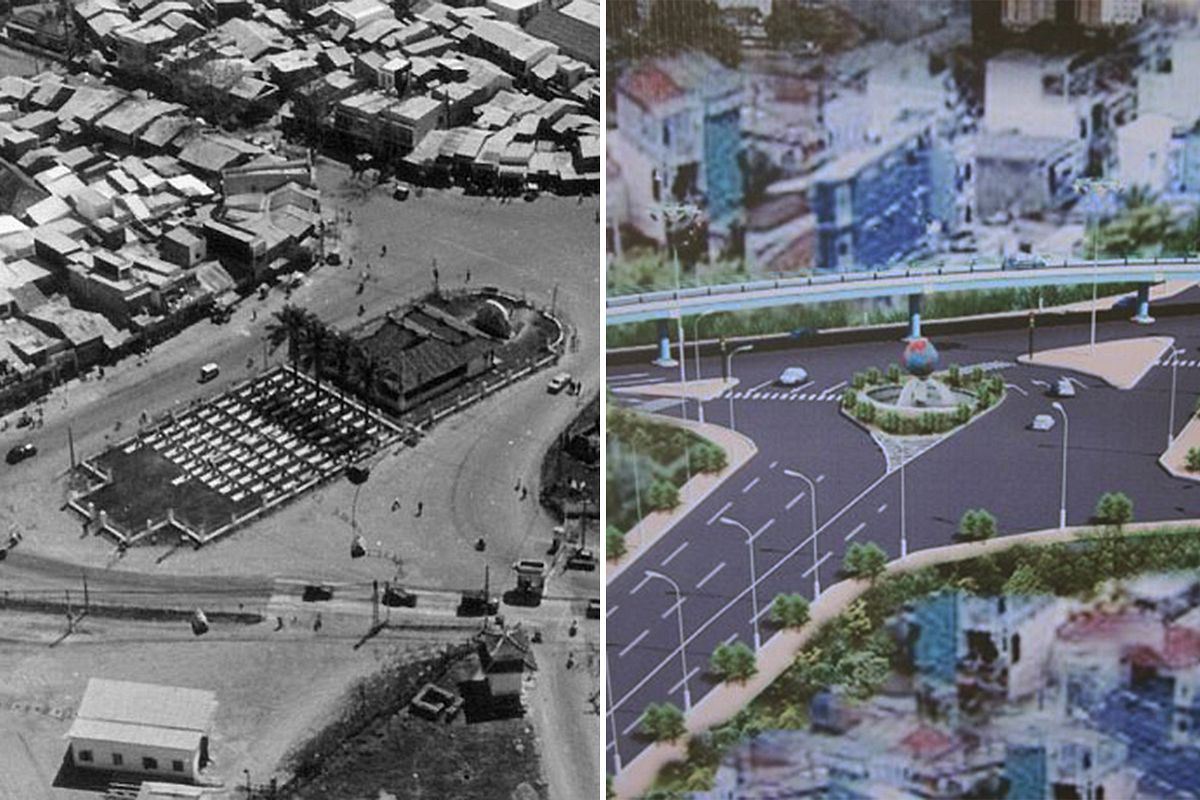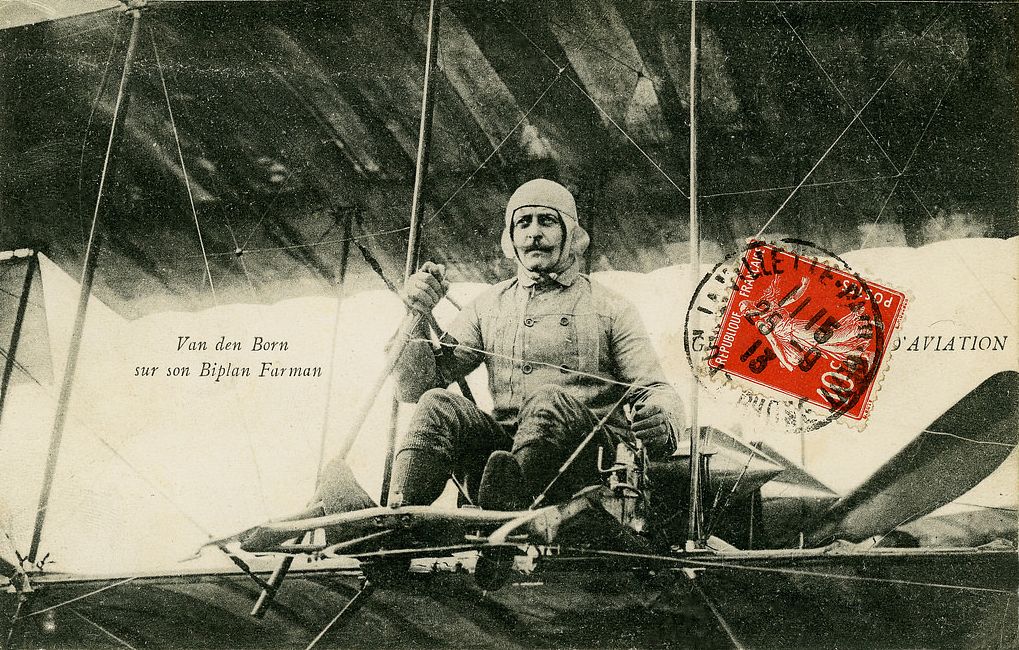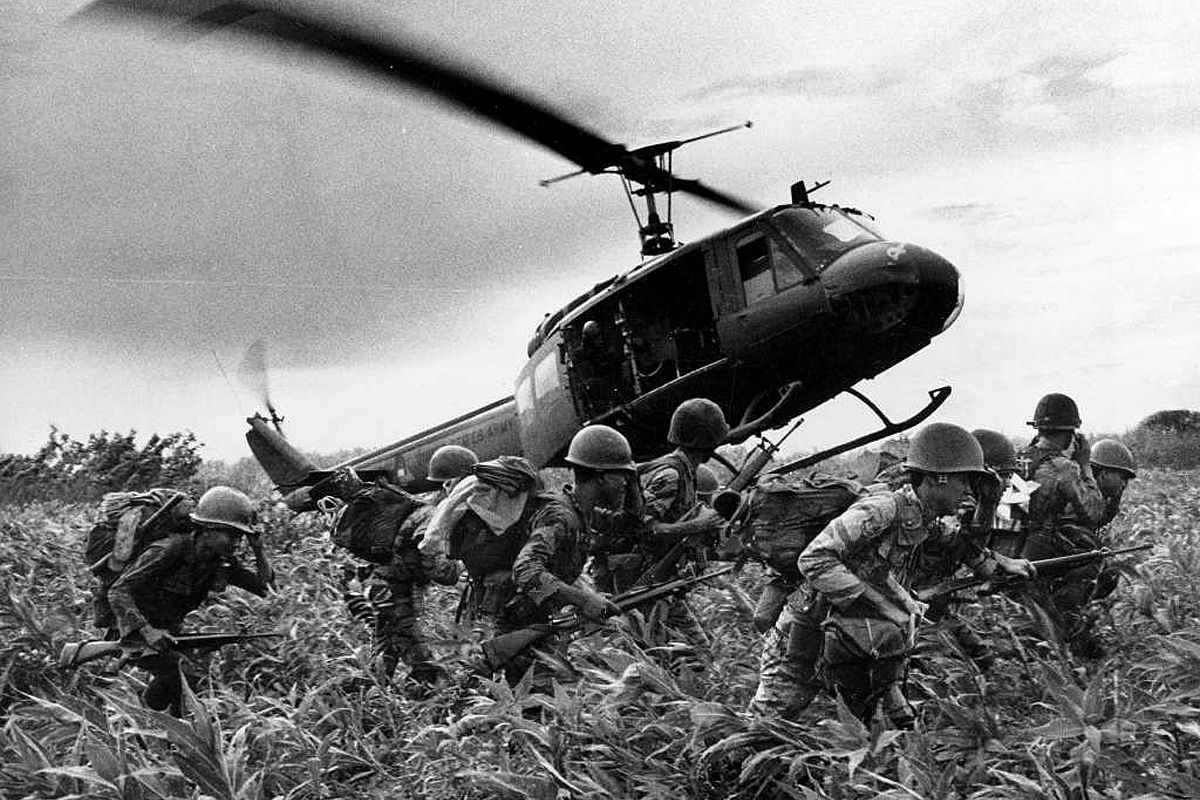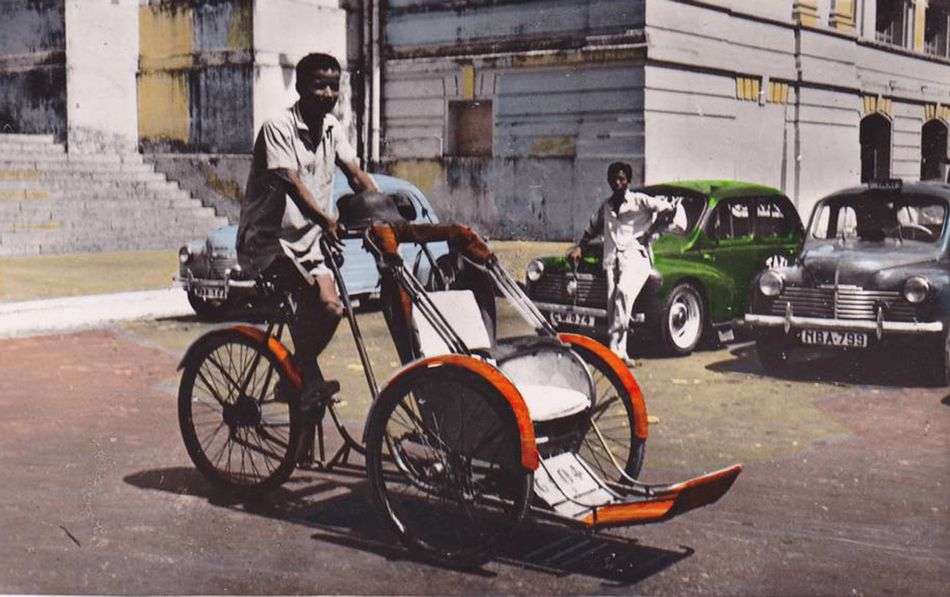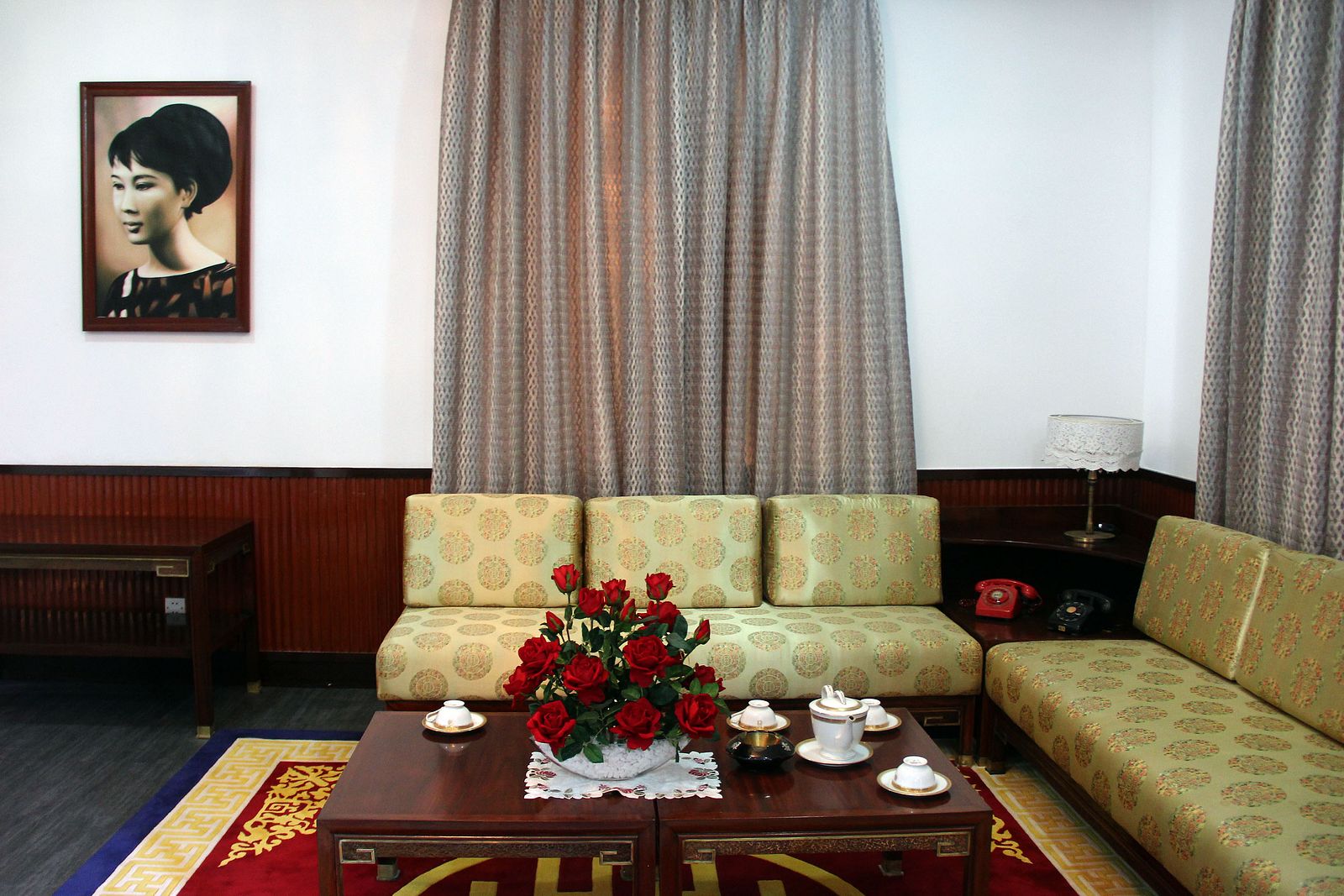Over the weekend, Saigon’s iconic Quach Thi Trang Square disappeared behind a wall of blue fencing in preparation for further metro construction.
The demise of the roundabout, which was officially announced last Thursday afternoon, began in earnest on Saturday, as workers extended the barricades surrounding 23-9 Park to include the top of Pham Ngu Lao Street and a series of street closures went into effect.


Photos by Michael Tatarski.
However, long before there was talk of metro systems and subterranean shopping malls, District 1’s most famous downtown square served as a gathering place and entertainment hub for the city’s inhabitants.
According to resident historian Tim Doling, the Quach Thi Trang Square of today stands on what was once the eastern edge of a swamp known as the Marais Boresse. The historic plaza made its debut around 1912-1914, along with a brand new incarnation of Ben Thanh Market, then known as the Halles Centrales.

An early photo of the Eugene-Cuniac square and Ben Thanh Market. Photo courtesy of Tim Doling.
Christened Eugene-Cuniac in 1916, French colonial residents named the square after former mayor of Saigon Eugene Francois Jean-Baptiste Cuniac, who had died earlier that year. The spacious Eugene-Cuniac replaced a railway depot for the Saigon-My Tho line, whose terminus was positioned at the far end of Ham Nghi and had previously run through the square. In its early days, Phap Luat reports, the area in front of Ben Thanh Market saw countless festivals and circus performances, dancers, cải lương musicians, and even boxing matches.
Eugene-Cuniac remained an open space until 1929, when city officials built a circular garden in the center, solidifying its purpose as a roundabout. After 1955, however, Eugene-Cuniac became Dien Hong Square, renamed by the South Vietnamese government after the 1284 Dien Hong Conference, believed by some historians to be the first democratic gathering in Vietnam, according to Doling.
Dien Hong certainly saw its fair share of political activity: during the turbulent later years of Ngo Dinh Diem’s presidency, protests in the central square were a common occurrence. On August 25, 1963, one such gathering escalated and a young high school student, 15-year-old Quach Thi Trang, was shot and killed by the police. In honor of their fallen classmate, the Saigon Students Association commissioned a memorial statue of the girl the following year, placing it in the center of the roundabout near the spot where she died.

The bust of Quach Thi Trang, pictured soon after its installation in August 1964. Photo courtesy of Tim Doling.
Two years later, a statue of General Tran Nguyen Han rode into the heart of Dien Hong on horseback, stationing itself at the center of the roundabout. A military leader and prominent player in the later Le dynasty, Han fought the Ming Chinese under Emperor Le Loi and later committed an honorable suicide after he was accused of trying to usurp the throne.

The statue of General Tran Nguyen Han, pictured soon after its installation in 1965. Photo courtesy of Tim Doling.
Still, it was Quach Thi Trang whose name became cemented in Saigon history after 1975, as the newly installed government renamed Dien Hong in memory of the young protestor.
For nearly 40 years, the roundabout remained relatively unchanged until a few years ago, when the beginnings of the HCMC Metro began to transform parts of downtown Saigon, including nearby Le Loi Street. In 2014, officials removed the statues of Tran Nguyen Han and Quach Thi Trang, relocating the former to District 6’s Phu Lam Park and the latter to Bach Tung Diep Park opposite the Ho Chi Minh City Museum on Ly Tu Trong.

Photo by Lee Starnes.
Late last year, city officials also hinted at plans to stop vehicular traffic around the roundabout, however this announcement ultimately resulted only in the closure of a section of 23-9 Park, leaving the roundabout itself largely untouched.
Last weekend, however, marked the end of an era for Quach Thi Trang Square. City officials also told media outlets the nearby Ben Thanh bus station will eventually be demolished to make way for a new and improved public plaza, though as of today this area remains in operation.

Photo by Brandon Coleman.



